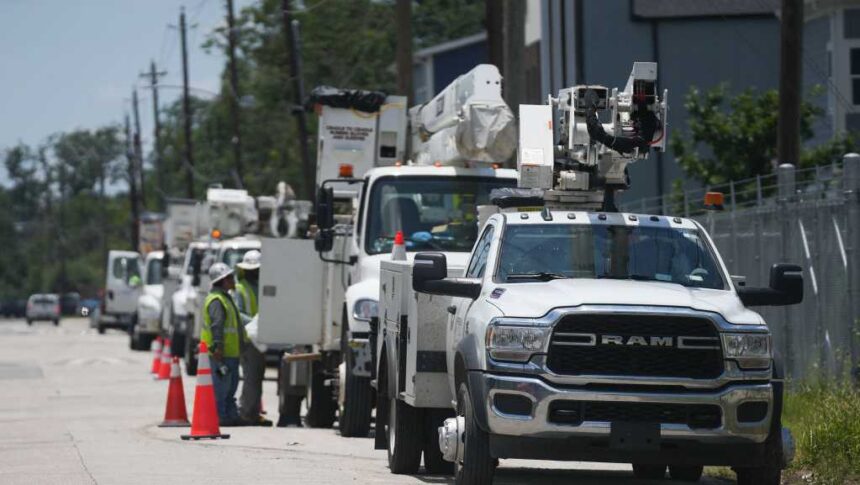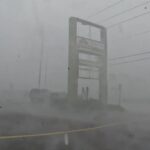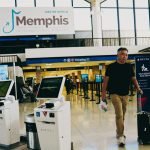The return of searing heat in the Houston area has deepened the misery for people still without power after Hurricane Beryl left residents in search of places to cool off and fuel up as the extended outages strained one of the nation’s largest cities.More than 1.7 million homes and businesses in Texas lacked electricity Wednesday morning, down from a peak of over 2.7 million on Monday, according to PowerOutage.us. State officials faced questions over whether the power utility that covers much of the area had sufficiently prepared.Texas Lt. Gov. Dan Patrick said that a sports and event complex would be used to temporarily hold up to 250 hospital patients who are awaiting discharge but cannot be released to homes with no power.Beryl, which made landfall in Texas early Monday as a Category 1 hurricane, has been blamed for at least seven U.S. deaths — one in Louisiana and six in Texas — and at least 11 in the Caribbean. It weakened as it moved deeper into the U.S. and early Wednesday was a post-tropical cyclone centered over northeastern Indiana.A flood watch was in effect for parts of Illinois, Indiana, Michigan, New York, Vermont, New Hampshire and Maine. The storm spawned suspected tornadoes in parts of Indiana and Kentucky.In the Houston area, Beryl compounded and repeated the misery of May, when storms killed eight people and left nearly 1 million without power.High temperatures Tuesday climbed into the 90s with humidity that made it feel even hotter. Similar heat and humidity were expected on Wednesday. The National Weather Service described the conditions as potentially dangerous, given the lack of power and air conditioning.People coped as best they could. Kyuta Allen took her family to a Houston community center to cool down and use the internet.“During the day you can have the doors open, but at night you’ve got to board up and lock up — lock yourself like into a sauna,” she said.An executive for CenterPoint Energy, which covers much of the Houston area, defended the utility’s preparation and response.“From my perspective, to have a storm pass at 3 p.m. in the afternoon, have those crews come in in the late evening, and have everything ready by 5 a.m. to go out and get out and start the workforce is rather impressive because we’re talking about thousands of crews,” said Brad Tutunjian, vice president of regulatory policy.Nim Kidd, head of the state’s division of emergency management, stressed that restoring power was the top priority.Patrick, who is acting as governor while Gov. Greg Abbott is overseas, said nursing homes and assisted living centers were the highest priority. Sixteen hospitals ran on generator power Tuesday morning, according to the Federal Emergency Management Agency.
More than 1.7 million homes and businesses in Texas lacked electricity Wednesday morning, down from a peak of over 2.7 million on Monday, according to PowerOutage.us. State officials faced questions over whether the power utility that covers much of the area had sufficiently prepared.
Texas Lt. Gov. Dan Patrick said that a sports and event complex would be used to temporarily hold up to 250 hospital patients who are awaiting discharge but cannot be released to homes with no power.
Beryl, which made landfall in Texas early Monday as a Category 1 hurricane, has been blamed for at least seven U.S. deaths — one in Louisiana and six in Texas — and at least 11 in the Caribbean. It weakened as it moved deeper into the U.S. and early Wednesday was a post-tropical cyclone centered over northeastern Indiana.
A flood watch was in effect for parts of Illinois, Indiana, Michigan, New York, Vermont, New Hampshire and Maine. The storm spawned suspected tornadoes in parts of Indiana and Kentucky.
In the Houston area, Beryl compounded and repeated the misery of May, when storms killed eight people and left nearly 1 million without power.
High temperatures Tuesday climbed into the 90s with humidity that made it feel even hotter. Similar heat and humidity were expected on Wednesday. The National Weather Service described the conditions as potentially dangerous, given the lack of power and air conditioning.
People coped as best they could. Kyuta Allen took her family to a Houston community center to cool down and use the internet.
“During the day you can have the doors open, but at night you’ve got to board up and lock up — lock yourself like into a sauna,” she said.
An executive for CenterPoint Energy, which covers much of the Houston area, defended the utility’s preparation and response.
“From my perspective, to have a storm pass at 3 p.m. in the afternoon, have those crews come in in the late evening, and have everything ready by 5 a.m. to go out and get out and start the workforce is rather impressive because we’re talking about thousands of crews,” said Brad Tutunjian, vice president of regulatory policy.
Nim Kidd, head of the state’s division of emergency management, stressed that restoring power was the top priority.
Patrick, who is acting as governor while Gov. Greg Abbott is overseas, said nursing homes and assisted living centers were the highest priority. Sixteen hospitals ran on generator power Tuesday morning, according to the Federal Emergency Management Agency.











